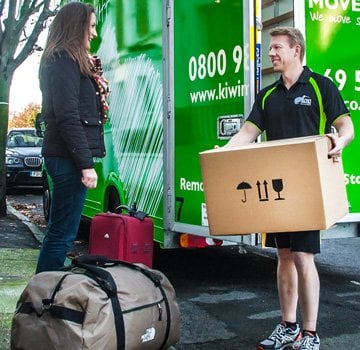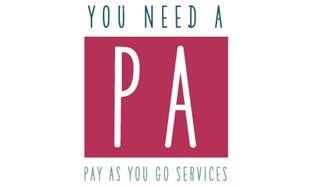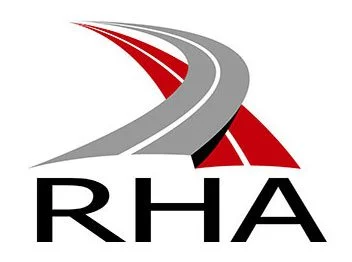A surprising number of people forget to keep their details up-to-date after a house move. Employer details, council tax and even online shopping information can remain incorrect for weeks or months. These mistakes are easy to make, but potentially costly.
Moving house is one or two days of heavy lifting, seven days of trying to remember where you put the TV remote and then an apparent lifetime of letting the relevant people know you’ve got a new address. There’s a lot to do and it feels like there’s not a lot of time to do it. The best approach is to be methodical; there are certain things you can’t take care of until you’ve sorted something else.
Council tax is one of the most important notifications you need to do because you don’t want to be paying tax for an address at which you no longer live.
Moving House – Council Tax Change of Address
You can get this one sorted prior to moving house. Simply visit the relevant page on your council’s website (see directory below to find your local council’s change of address page) and let them know the date on which you’ll be vacating your current property and moving into your new one.
It’s important to note that if the property you currently live in is your own and will be vacant after your departure, you still need to pay council tax. However, this will be at a reduced rate. If you’re vacating a rented property, you are no longer responsible for the council tax at that address.
*See below for full directory of council tax house move resources and change of address notification pages.
What happens with council tax when I move house?
In most cases, your council will send you a final bill which they’ll take as a monthly payment, plus they’ll also send you a statement. They will then send you a new annual bill for the property to which you’ve moved. Unless you move at the start of your council’s financial year, this will be prorated to reflect what is left to pay. If you will be paying council tax to the same council as prior to your to your move, you can normally carry on with the same Direct Debit arrangement. If you’re moving to a new council area, you’ll need to set up a new account and begin as a new customer.
Remember, you need to advise both councils – the one collecting the tax where you currently live and the one collecting the tax where you’re moving to – about your change of address. You may be fined if you fail to notify your council tax department of a change in address.
Moving House Checklist – Other things to Sort Out
So you’ve told your council about a change of address; here are some other essential things you need to take care of.
Driving licence change of address
Changing the address on your driving license is surprisingly easy nowadays. If you’ve got a recent passport, you won’t even need to send off a new photo. Renew your driving license here.
Workplace
No doubt colleagues and work friends will know you’re moving, but your HR department will have a process for logging new addresses. You can typically notify your employer of a change in address by filling out the form on your payslip.
Bank
Even if you’ve got online banking and paperless statements, your bank still needs to know where you live for anti-fraud reasons. Most banks require you attend a branch in person, with I.D and proof of residence (a utility bill, mortgage statement or tenancy agreement) before they’ll let you change the address on your account. If you don’t change your bank address, you may experience problems paying for things with your debit card online and you also leave yourself open to fraud and identify theft.
Doctor
You don’t have to let your current doctor know you’re moving – your new doctor will write to them to request your medical records – but most practices would appreciate being notified so they can manage patient numbers more effectively.
Insurance companies
Another important one, especially if you’re transferring car, home and contents cover. Most insurance companies let you do this online. Before notifying them, get a selection of quotes for cover at your new address. You may find that you can save money (or at least minimise the increases) by switching provider. Your insurer will most likely prorate what is left to pay and add it to your final bill, plus any cancellation fees.
Utility providers change of address
This should be one of the first things you change. It’s wise to shop around for a better deal at this stage too, as different utility providers have different tariffs in certain areas. Since you’re having to change address anyway, you might as well check to see if there’s a better deal.
Post Office change of address
You can set up mail redirection for approximately £30 per year. This means all mail addressed to you at your old address goes straight to your new address. But do be aware, this only covers your name. If you and an unmarried partner or housemate are both moving out, you’ll need separate mail redirection. You can set it all up on the Post Office’s website.
TV Licensing change of address
You should tell TV Licensing of a change in address, but you will not typically need to renew or alter your license, unless you won’t be watching live television at your new address. You can tell TV Licensing about your new circumstances here.
HMRC change of address
For obvious reasons, HMRC are pretty good at keeping up-to-date with where you live. They often share data with local authorities, so you may notice that they update their files before you notify them of a change of address, but it’s best to be proactive. You can change your address by logging into your online HMRC account.
Child benefits agency change of address
Once you’ve told HMRC you’re moving, they tend to update all relevant records, although you can make sure things move quicker by doing everything yourself. You can update your details on the official website here.
Council Tax Change of Address – Useful Links
Below is a list of links to each UK council’s council tax change of address page. Find your council here and inform them of your new address in seconds.
- Aberdeen Council
- Aberdeenshire Council
- Adur & Worthing Councils
- Allerdale Borough Council
- Amber Valley Borough Council
- Angus Council
- Argyll and Bute Council
- Ashford Borough Council
- Aylesbury Vale District Council
- Babergh District Council
- Barnsley Council Online
- Basildon Council
- Basingstoke and Deane Borough Council
- Bassetlaw District Council
- Bathnes Council
- Bedford Borough Council
- Birmingham City Council
- Blaby District Council
- Blackburn Council
- Blackpool Council
- Borough of Barking and Dagenham Council
- Borough of Poole Council
- Boston Borough Council
- Bournemouth Borough Council
- Bracknell Forest Council
- Bradford Council
- Braintree District Council
- Breckland – Breckland Council
- Brent Council
- Brentwood Council
- Brighton & Hove City Council
- Bristol City Council
- Bromley Council
- Bromsgrove District Council
- Bury Council
- Caerphilly – Caerphilly County Borough Council
- Caerphilly County Borough
- Calderdale Council
- Cambridge City Council
- Canterbury City Council
- Cardiff – Home, Council Tax
- Carlisle City Council
- Carmarthenshire Council
- Central Bedfordshire Council
- Ceredigion County Council
- Charnwood Borough Council
- Chelmsford City
- Cheltenham Borough Council
- Cherwell Council
- Cheshire East Council
- Cheshire West and Chester Council
- Chiltern District Council
- Chorley Borough Council
- City of Lincoln Council
- City of London
- City of York Council
- Clackmannanshire Council
- Colchester Borough Council
- Conwy County
- Corby Council
- Cornwall Council
- Fareham Borough Council
- Coventry City Council
- Craven District Council
- Crawley Borough Council
- Croydon Council
- Cyngor Sir Powys County Council
- Dacorum Borough Council
- Darlington Borough Council
- Dartford Borough Council
- Derby City Council
- Derbyshire Dales District Council
- Doncaster Council
- Dorset County Council
- Dover District Council
- Dudley Council
- Dumfries and Galloway Council
- Durham County Council
- Ealing Council
- East Ayrshire Council
- East Devon District Council
- East Dunbartonshire Council
- East Hampshire District Council
- East Herts District Council
- East Lothian Council
- East Northamptonshire Council
- East Renfrewshire Council
- East Riding of Yorkshire Council
- East Sussex County Council
- Eastbourne Borough Council
- Eden District Council
- Edinburgh Council
- Elmbridge Borough Council
- Enfield Council
- Epsom and Ewell Borough Council
- Erewash Borough Council
- Exeter City Council
- Falkirk Council
- Fife Council
- Flintshire Council
- Gateshead Council
- Gedling Borough Council
- Glasgow City Council
- Gloucester Council
- Gravesham Borough Council
- Great Yarmouth Borough Council
- Greenwich Council
- Guildford Borough Council
- Gwynedd Council
- Hackney Council
- Hammersmith & Fulham Council
- Harborough District Council
- Haringey Council
- Harlow Council
- Harrogate Borough Council
- Harrow Council
- Hart District Council
- Hartlepool Borough Council
- Havering Council
- Herefordshire Council – Hereford
- High Wycombe Council
- Hounslow Council
- Hull City Council
- Huntingdonshire District Council
- Inverclyde Council
- Ipswich – Ipswich Borough Council
- Isle of Wight Council
- Islington Council
- Lambeth Council
- Lancashire Borough Council
- Lancaster City Council
- Leeds City Council
- Leicester City Council
- Lewisham Council – Council tax
- Lichfield District Council
- Liverpool City Council
- London – Newham Council
- London – Tower Hamlets Council
- London Borough of Barnet Council
- London Borough of Bexley Council
- London Borough of Hillingdon
- London Borough of Richmond upon Thames Council
- London Borough of Sutton Council
- Luton Borough Council
- Maidstone Borough Council
- Maldon Council
- Malvern Hills District Council
- Manchester City Council
- Mansfield District Council
- Medway Council
- Merton Council
- Mid Devon District Council
- Mid Suffolk District Council
- Mid Sussex District Council
- Milton Keynes Council
- Mole Valley District Council
- Moray Council
- Neath Port Talbot County Borough Council
- New Forest: Council
- Newark Council
- Newcastle City Council
- Newport City Council
- North Ayrshire Council
- North East Derbyshire District Council
- North East Lincolnshire Council
- North Hertfordshire Council
- North Kesteven
- North Lincolnshire Council
- North Somerset Council | Council
- North Tyneside Council
- North West Leicestershire District
- Northampton Borough Council
- Northumberland County Council
- Norwich City Council
- Oldham Council
- Oxford – Oxford City Council
- Pembrokeshire County Council
- Pendle Borough Council
- Perth and Kinross Council
- Peterborough – Peterborough City Council
- Plymouth City Council
- Portsmouth – Portsmouth City Council
- Preston City Council
- Reading Borough Council
- Redbridge Council
- Redditch Borough Council
- Renfrewshire Council
- Rhondda Cynon Taf County Borough Council
- Ribble Valley Borough Council
- Rochford District Council i
- Rotherham Metropolitan Borough Council
- Royal Borough of Kensington and Chelsea Council
- Royal Borough of Kingston Council
- Rugby Borough Council
- Runnymede Council
- Rushcliffe Borough Council
- Rushmoor Borough Council
- Salford City Council
- Sandwell Council
- Sedgemoor District Council
- Sefton Council
- Selby District Council
- Sheffield City Council
- Shepway District Council
- Sholland Council
- Shropshire Council
- Slough Borough Council
- Solihull Council
- South Ayrshire Council
- South Derbyshire District Council
- South Gloucestershire Council
- South Hams District Council
- South Kesteven District Council
- South Lanarkshire Council
- South Oxfordshire District Council
- South Ribble Borough Council
- South Somerset District Council
- South Staffordshire Council
- South Tyneside Council
- Southampton City Council
- Southend-on-Sea Council
- Southwark Council
- Spelthorne Borough Council
- St Albans City & District Council
- St Edmunds Bury Borough Council
- St Helens Council
- Stafford Council Tax Discounts
- Stockport Council
- Stockton-on-Tees Council
- Stoke-on-Trent City Council
- Stroud District Council
- Suffolk Coastal District Council
- Surrey County Council
- Surrey Heath Borough Council
- Swindon Borough Council
- Tameside Council
- Tandridge Council
- Taunton Deane Borough Council
- Teignbridge District Council
- Telford & Wrekin Council
- Tendring District Council
- Test Valley Borough Council
- Tewkesbury Borough Council
- Thanet District Council
- The Highland Council
- The Royal Borough of Windsor and Maidenhead Council
- Three Rivers District Council
- Tonbridge and Malling Council
- Torbay Council
- Trafford Council
- Tunbridge Wells Borough Council
- Vale of White Horse District Council
- Wakefield Council Tax
- Walsall Council
- Waltham Forest Council
- Wandsworth Borough Council
- Warrington
- Watford Borough Council
- Waveney District Council
- Waverley Borough Council
- Wealden Council
- Welwyn Hatfield Borough Council
- West Berkshire Council – Moving House
- West Lindsey Council
- West Lothian Council
- West Oxfordshire District Council
- West Somerset Council
- West Sussex County Council
- Westminster City Council
- Wiltshire Council
- Winchester City Council
- Wirral Borough Council
- Woking Borough Council
- Wokingham Borough Council
- Worcester City Council
- Wrexham – Wrexham County Borough Council
- Wychavon Council
- Wyre Forest District Council




















